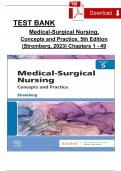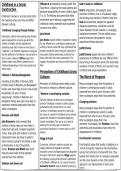Exam (elaborations)
Test Bank For Medical-Surgical Nursing, Concepts and Practice, 5th Edition 2024 by Holly K. Stromberg, Chapters 1 - 49, Complete Verified Newest Version
- Course
- Institution
- Book
Test Bank For Medical-Surgical Nursing, Concepts and Practice, 5th Edition 2024 by Holly K. Stromberg, Chapters 1 - 49, Complete Verified Newest Version TEST BANK For Medical-Surgical Nursing, Concepts and Practice, 5th Edition (Stromberg, 2023), Verified Chapters 1 - 49, Complete Newest Version Te...
[Show more]




